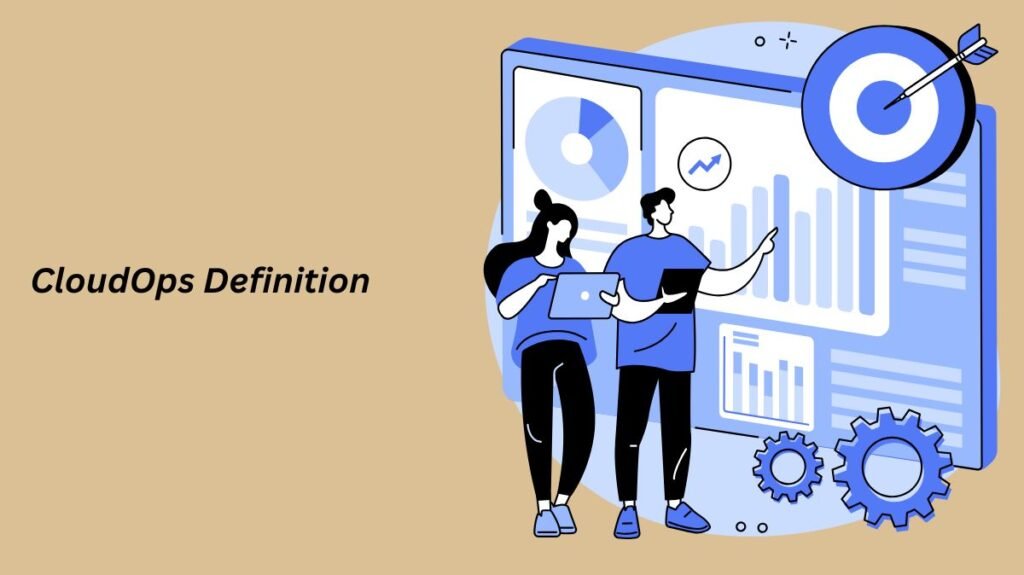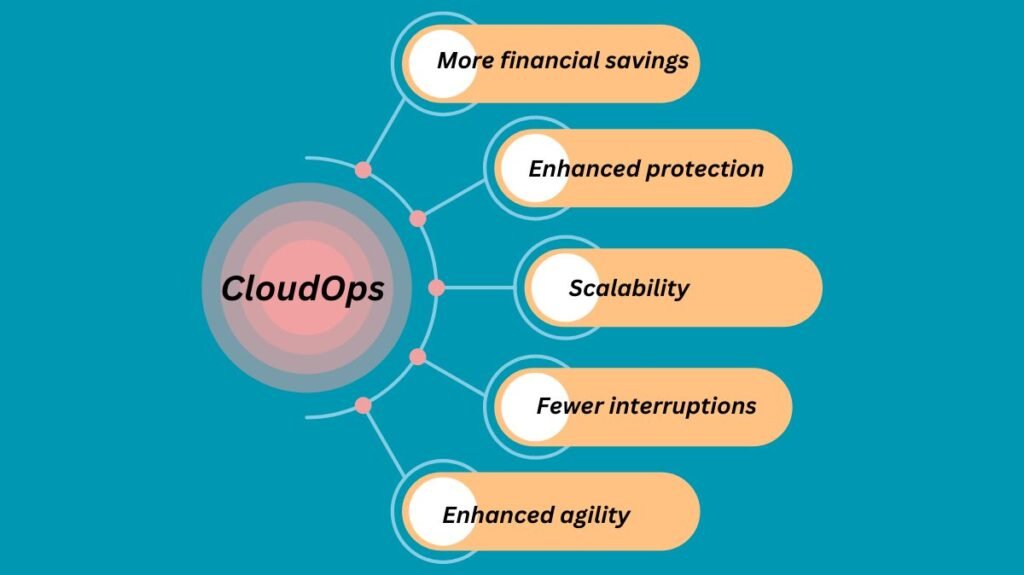Contents [hide]
Cloud operations CloudOps
CloudOps Definition

The discipline of managing the delivery, tuning, optimization, and performance of workloads and IT services that operate in a cloud environment including multi-, hybrid, data centre, and edge is known as cloud operations, or CloudOps. Similar to how DevOps codifies best practices and procedures for application development and delivery processes, CloudOps does the same for cloud-based operational processes.
Analytics play a key role in cloud operations by improving visibility of cloud environment components and offering the knowledge required to effectively manage resources and perform services. As IT operations have moved from on-premises to cloud-based infrastructure, CloudOps has taken the place of the network operations centre (NOC) for certain organizations. CloudOps monitors, instruments, and controls virtual machines, containers, and workloads that operate in a cloud, much like the NOC did for the data centre. To achieve commercial and technological objectives, developers, IT operations, and security work together utilising CloudOps concepts.
Why is CloudOps needed?
There are many moving components in cloud settings, and the complexity of maintaining cloud infrastructure has increased. Many businesses adopt new tools and services reactively at first, taking an ad hoc approach to cloud operations. This leads to increased expenses, a lack of visibility between teams and tools, and a possible rise in security flaws due to a wider attack surface.
An approach based on CloudOps is more proactive and strategic. It integrates the teams, technology, and business priorities necessary to maintain the functionality of IT systems. Additionally, it uses automation to bring the various procedures involved in cloud environment management together.
Businesses who implement a successful CloudOps strategy understand:

More financial savings
A significant business expense is eliminated for organizations using cloud infrastructure since they don’t have to worry about electricity, cooling, and other facility charges related to keeping technology on premise. Because cloud services use a consumption-based payment model, they are also more affordable. Long-term commitments are rewarded with committed spend reductions that scale with consumption from several major cloud providers, including Microsoft Azure, Google Cloud, and Amazon Web Services (AWS).
Enhanced protection
Security at the underlying infrastructure layer is the responsibility of cloud providers. They manage security patching and software updates to lower the possibility of vulnerabilities, and they carry out ongoing monitoring to promptly detect and eliminate threats. In order to assist organizations in managing cloud security, enforcing compliance standards, and safeguarding vital data, the majority of large cloud providers also provide first- and third-party tools and services.
Scalability
Cloud services can readily grow to accommodate unexpected or planned spikes in demand. You may instantly supply servers, virtual machines, storage, and bandwidth at the push of a button using application programming interfaces (APIs), an automation tool, or a self-service portal from the cloud platform of your choice.
Fewer interruptions
Upgrades to cloud apps and infrastructure can be implemented with little downtime, allowing regular or unforeseen updates to continue without interfering with corporate operations.
Enhanced agility
Automating repetitive, manual operations that consume a lot of time and corporate resources is the goal of a smart CloudOps approach. CloudOps teams may operate more quickly and effectively by automating everything from application lifecycle management to cloud migration.
Functions of cloud operations
Monitoring, fixing, and remediating problems pertaining to conventional IT operations and assets is the primary responsibility of an operations team. Because a large portion of the capital expenses and operational tasks are delegated to the cloud provider, IT operations can enhance and provide substantial value.
The abilities required to do cloud operations tasks might be supplied by:
Teams in DevOps
IT-related activities
Outsource vendors for IT operations
providers of cloud services
Cloud-based service providers
Teams of operations dedicated to a certain application
Operations teams for business applications
Components of cloud computing OPs
Some of the most essential elements of the contemporary cloud computing architecture are listed below.

Data centres
Cloud service providers (CSPs) own and run remote data centres that contain cloud storage systems, physical or bare metal servers, and other hardware components that provide the physical basis and underlying infrastructure of cloud computing.
Capabilities for networking
High-speed networking connections are essential for cloud computing. Wide-area networks, or WANs, are internet connections that often link back-end operations (like data centres and cloud-based apps and services) with front-end consumers (such client-side interfaces displayed on web-enabled devices). To guarantee that data moves between front-end users and back-end resources swiftly, simply, and securely, other cutting-edge cloud computing networking technologies are also included, such as load balancers, content delivery networks (CDNs), and software-defined networking (SDN).
The use of virtualisation
Virtualisation of IT infrastructure servers, operating systems, networking, and other infrastructure that is abstracted using specialised software so that it can be shared and partitioned regardless of actual hardware boundaries is a key component of cloud computing. One hardware server, for instance, can be split up into several virtual servers. Cloud providers can utilise their data centre resources to their fullest potential with virtualisation.
Leading suppliers
CloudOps may make use of hundreds of tools from dozens of suppliers. Ironically, limiting the amount of tools needed to achieve high availability in the cloud is a hurdle for administrators.
The majority of public cloud providers, such as AWS, Microsoft Azure, Google Cloud, and IBM, provide their clients with CloudOps capabilities. To automate configuration management, cloud provisioning, and application deployment, network engineering teams can also employ open source tools like Ansible or Chef in addition to commercial products from Apigee or Flexera, previously RightScale.
Purpose of cloud computing operations
The following are the goals of cloud computing operations:
- To provide infrastructure or cloud services, or they can provide both at the same time.
- Cloud operations contributes to capacity and performance development. Regardless of the platform or infrastructure location, it also ensures that resources are managed appropriately.
- Meeting service level agreements (SLAs) is aided by it.
- Additionally, Cloud Operations keeps the configurations and compliance up to date.
- It has the ability to charge back, change management, and automate the set of services.
- It also offers accurate metering and aids in preserving transparency.
- Disaster recovery planning and mitigation are also guaranteed by cloud operations.
CloudOps Features
- A crucial partner collaborator in designing and expediting the cloud-native path is CloudOps.
- When implementing, developing, and delivering cloud services, it aids in achieving the desired business outcomes.
- Additionally, it assists hundreds of web-based businesses and corporations in developing their operations in the cloud without compromising privacy, cost, performance, or compliance.
- In a computing environment with restricted visibility into app infrastructures, it refers to the particular administration, delivery, and consumption of software.
- Continuous Integration (CI) and Continuous Deployment (CD), two DevOps concepts, are used by CloudOps in a variety of businesses to develop best practices for improving business operations.

